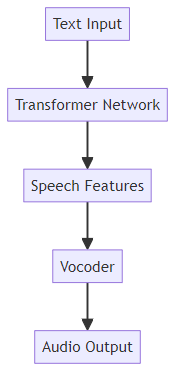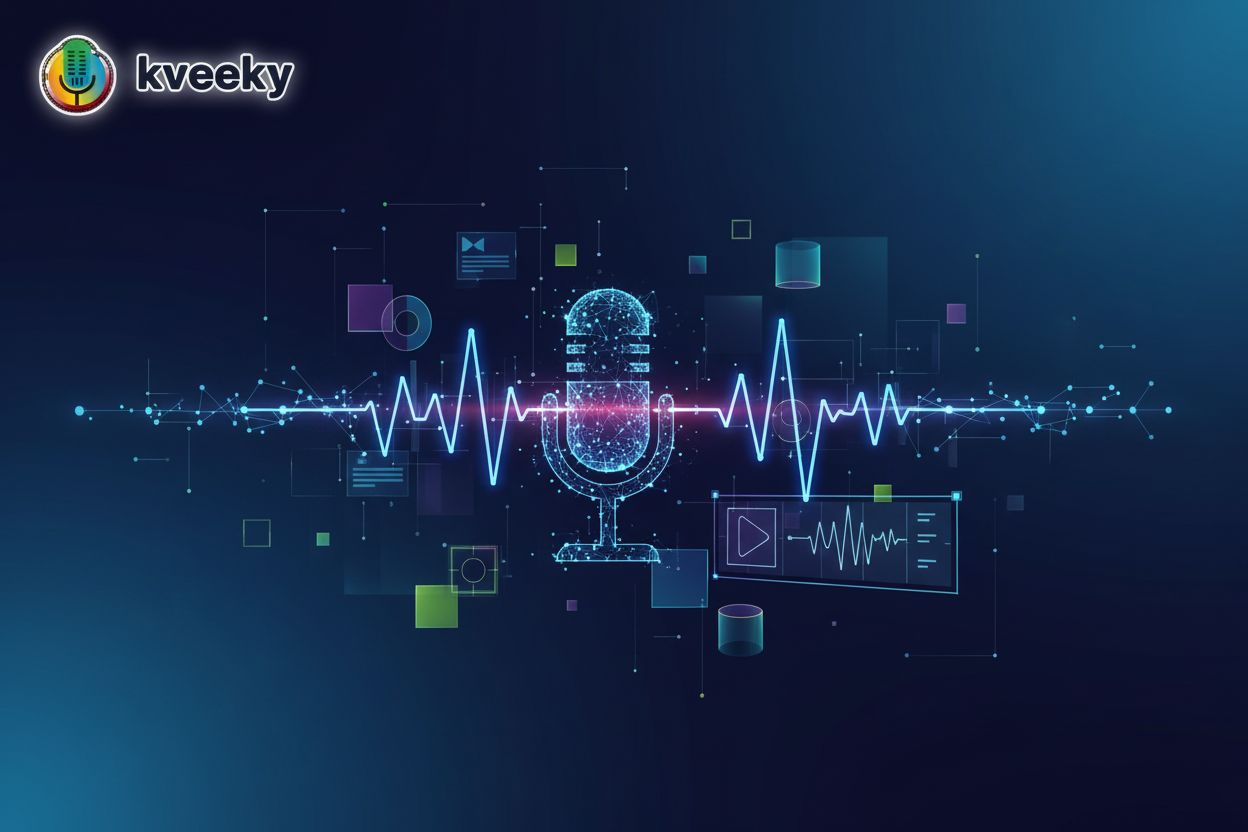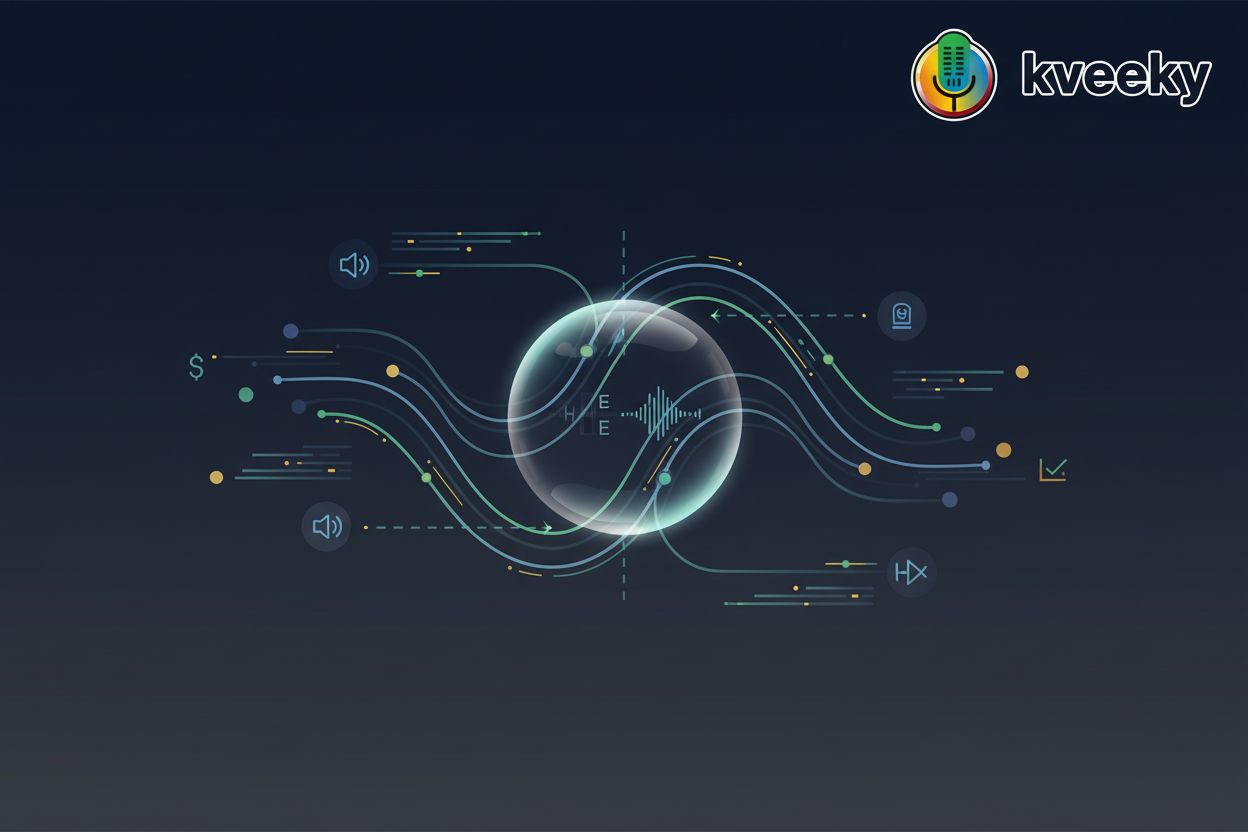Zero-Shot Voice Cloning: The Future of AI Voiceovers for Video Producers
Introduction to Zero-Shot Voice Cloning
Imagine being able to create a professional-sounding voiceover for your video using just a few seconds of audio – that's the promise of zero-shot voice cloning. This technology is rapidly changing the landscape of ai voiceovers, offering video producers unprecedented flexibility and efficiency.
Zero-shot voice cloning is a method of voice cloning that requires minimal to no training data from the target speaker. Unlike traditional voice cloning techniques that rely on extensive recordings, zero-shot cloning can replicate a voice using just a brief audio sample. According to learnius, this approach represents a significant advancement in the field.
- Definition: Zero-shot voice cloning enables the creation of a synthetic voice that mimics a target speaker with little to no training data.
- Contrast: Traditional methods need significant amounts of recorded speech, while zero-shot needs only a snippet.
- Benefits: This leads to faster, more affordable, and more accessible voiceover solutions.
For video producers, zero-shot voice cloning offers a range of compelling advantages. It allows for quick voiceover generation without the hassle of hiring voice actors for every project which saves time and resources.
- Diverse Projects: Create voiceovers for various projects without needing multiple voice actors.
- Rapid Iteration: Quickly generate voiceovers for A/B testing, allowing for content optimization.
- Budget-Friendly: Make professional voiceovers accessible even for projects with limited funds.
The applications of zero-shot voice cloning in video content creation are vast and varied. From explainer videos to e-learning materials, this technology can enhance the quality and impact of video content.
- Explainer Videos: Maintain a consistent brand voice across all explainer and tutorial videos.
- E-Learning: Develop engaging and personalized learning experiences with tailored voiceovers.
- Marketing Videos: Craft voiceovers that are perfectly tailored to resonate with specific target audiences.
As ai technology evolves, zero-shot voice cloning is poised to become an indispensable tool for video producers. In the upcoming section, we'll explore the technical aspects that make this innovation possible.
How Zero-Shot Voice Cloning Works: A Technical Overview
Ever wondered what goes on under the hood of zero-shot voice cloning? This technology blends several ai techniques to bring voices to life with minimal input. Let's dive into the core components and processes that make this possible.
At the heart of zero-shot voice cloning are sophisticated deep learning models. These models, particularly Transformer networks, excel at sequence-to-sequence learning, which is crucial for converting text into speech. Transformers are a type of neural network architecture that's really good at handling sequential data, like text. They use a mechanism called "attention" to weigh the importance of different parts of the input sequence when generating the output. In text-to-speech, this means they can understand the context of a sentence to produce more natural-sounding speech.

- Generative Adversarial Networks (GANs) play a vital role in enhancing both speech quality and speaker similarity. GANs involve two neural networks, a generator and a discriminator, that compete to produce realistic speech. The generator tries to create fake speech that sounds real, and the discriminator tries to tell the difference between real and fake speech. This constant competition pushes the generator to create increasingly convincing audio.
- Acoustic modeling is the process of converting text into speech features, capturing the nuances of pronunciation and intonation.
- Vocoders then take these speech features and generate the final audio waveforms, ensuring the output sounds natural and coherent.
The process begins with just a small audio sample (or even a description) of the target speaker's voice.

- Voice analysis extracts key characteristics and features, identifying unique vocal traits.
- Voice synthesis leverages these features to generate speech in the target voice from the given text.
- Refinement uses adversarial training to further improve the naturalness and similarity of the cloned voice.
Overcoming Challenges: Data Variance and Naturalness
One of the main hurdles is addressing the high variance in speaking styles. According to a paper published on arXiv, multi-modal adversarial training can improve both the acoustic and prosodic features of a TTS model Multi-modal Adversarial Training for Zero-Shot Voice Cloning. Multi-modal adversarial training involves using different types of data – like audio and text – within the GAN framework. This helps the model learn a more comprehensive understanding of speech, leading to better acoustic (sound quality) and prosodic (rhythm, intonation) features.
- Ensuring the generated voice sounds natural and human-like requires careful calibration of these models.
- By focusing on acoustic and prosodic features, ai systems can create voiceovers that are virtually indistinguishable from the real thing.
Understanding these technical underpinnings provides insight into the immense potential of zero-shot voice cloning. Next, we'll delve into the compelling benefits and practical applications of this technology in video production.
Benefits of Using Zero-Shot Voice Cloning for AI Voiceovers
Zero-shot voice cloning can dramatically reduce voiceover costs, and that's a huge deal for video producers. Let's explore how this technology is transforming video production workflows and budgets.
One of the most significant benefits of zero-shot voice cloning is its ability to reduce costs. By using ai to generate voiceovers, video producers can significantly cut down on expenses related to studio recordings and voice actor fees. This means more budget for other parts of your video, which is always a good thing.
- Reducing Costs: Zero-shot voice cloning eliminates the need to hire professional voice actors for every project. This can translate to substantial savings, especially for organizations producing large volumes of video content.
- Accelerating Production: Traditional voiceover processes can be time-consuming, involving auditions, studio bookings, and multiple recording sessions. Zero-shot cloning accelerates this process, allowing for faster turnaround times and quicker project completion.
- Enabling Quick Revisions: With ai-generated voiceovers, revisions and updates can be made quickly and easily. Instead of re-recording entire scripts, producers can simply adjust the text and regenerate the voiceover, saving both time and money.
Zero-shot voice cloning offers unparalleled scalability and flexibility for video producers. This technology makes it easier to adapt to various project needs, languages, and creative visions.
- Scaling Production: For businesses that require a high volume of video content, zero-shot cloning provides a scalable solution. It allows for the rapid creation of voiceovers for numerous videos without straining resources or budgets.
- Adapting to Languages: Zero-shot cloning can be adapted to different languages and accents, making it ideal for international marketing campaigns or multilingual e-learning materials. This eliminates the need to source voice actors for each language, streamlining the localization process.
- Creating Unique Voices: Beyond replicating existing voices, zero-shot cloning can be used to create entirely new voices for fictional characters or brand personas. This opens up creative possibilities for animated videos, video games, and immersive storytelling experiences.
Video producers gain a high degree of customization and control over voiceovers with zero-shot cloning. This level of control ensures that the final product aligns perfectly with their creative vision and brand identity.
- Fine-Tuning Voice Parameters: Zero-shot cloning allows for precise adjustments to voice parameters such as pitch, speed, and emotion. Producers can fine-tune these elements to create voiceovers that convey the desired tone and feeling.
- Integrating with Scriptwriting Tools: Seamless integration with scriptwriting tools streamlines the voiceover production workflow. This allows producers to generate voiceovers directly from their scripts, saving time and reducing the potential for errors.
- Maintaining Brand Consistency: By cloning a specific voice, businesses can maintain brand consistency across all video content. This helps to reinforce brand recognition and create a cohesive viewing experience for audiences.
These benefits make zero-shot voice cloning an invaluable asset for video producers looking to enhance their workflows and reduce costs. Next, we'll provide a practical guide on how to implement zero-shot voice cloning and customize it to meet your specific project requirements.
Practical Guide: Implementing Zero-Shot Voice Cloning in Your Workflow
Ready to take your video production to the next level? Implementing zero-shot voice cloning into your workflow can seem daunting, but with the right approach, it's surprisingly straightforward.
Selecting the right tool is paramount. Consider these factors when evaluating different platforms:
- Voice Quality: Assess the naturalness and clarity of the generated voices. High-quality tools should produce voiceovers that are virtually indistinguishable from human speech.
- Customization Options: Look for platforms that allow you to fine-tune voice parameters such as pitch, speed, and emotion. The more control you have, the better you can tailor the voiceover to your specific needs.
- Pricing: Compare pricing models and plans to find a solution that fits your budget. Some tools offer subscription-based pricing, while others offer pay-as-you-go options.
Beyond the core features, it's essential to consider factors like ease of use, integration capabilities, and customer support. Opt for tools that provide a user-friendly interface and seamless integration with your existing scriptwriting and video editing software.
- Ease of Use: The tool should be intuitive and easy to navigate, even for users with limited technical expertise.
- Integration Capabilities: Ensure the platform integrates seamlessly with your existing workflow tools.
- Customer Support: Reliable customer support can be invaluable, especially when troubleshooting complex issues.
Many platforms offer a free trial or demo, which can be an excellent way to test the technology before committing to a subscription. Take advantage of these opportunities to evaluate the tool's capabilities and determine if it meets your needs. Some popular and reputable zero-shot voice cloning tools include:
- ElevenLabs: Known for its incredibly realistic voice generation and a wide range of customization options, including emotional expression. They often have tiered pricing based on usage.
- Resemble AI: Offers robust features for voice cloning, including real-time voice conversion and a focus on ethical AI use. Their pricing can vary depending on the features and volume needed.
- Murf.ai: A comprehensive ai voice generator that includes zero-shot cloning capabilities, often favored for its user-friendly interface and integration with video editing workflows. They typically offer subscription plans.
Once you've selected a zero-shot voice cloning tool, the process of cloning a voice and generating voiceovers typically involves these steps:
- Recording a Voice Sample: If you want to clone a specific voice, you'll need to record a high-quality audio sample. Ensure the recording is clean and free of background noise. Even 30 seconds to a minute can be enough for some tools.
- Uploading the Voice Sample: Upload the voice sample to your chosen platform and follow the instructions to create a voice profile.
- Entering the Text: Input the text you want to be voiced over.
- Adjusting Parameters: Fine-tune voice parameters such as pitch, speed, and emotion to achieve the desired effect.
- Generating the Voiceover: Once you're satisfied with the settings, generate the final voiceover and download it for use in your video project.
To achieve the best possible results, follow these tips for optimizing voiceover quality:
- Clean Audio Recording: Ensure a clean audio recording for the voice sample. Minimize background noise and echo.
- Experiment: Experiment with different voice parameters to achieve the desired effect. Don't be afraid to try different settings.
- Proofread: Proofread the script for accuracy and natural flow. Awkward phrasing in the script will translate to awkward speech.
- Post-Processing: Use post-processing tools to enhance the audio quality. EQ and compression can make a big difference.
By carefully following these steps and optimizing your approach, you can harness the power of zero-shot voice cloning to create high-quality voiceovers for your video projects.
With these practical tips in mind, let's explore the ethical considerations surrounding zero-shot voice cloning in the next section.
Advanced Techniques and Future Trends
The world of ai voiceovers is rapidly evolving, with techniques becoming more sophisticated and personalized. What was once science fiction is quickly becoming a reality for video producers.
One of the most promising advancements is multi-modal adversarial training, which uses Generative Adversarial Networks (GANs) to enhance the quality and naturalness of synthesized speech. These GANs conditionally discriminate between real and generated speech features, leading to more realistic outputs.
According to a paper published on arXiv, this technique improves both the acoustic and prosodic features of TTS models Multi-modal Adversarial Training for Zero-Shot Voice Cloning. This is achieved by training on large multi-speaker datasets, which allows the model to learn a wider range of speaking styles and nuances.
"Our model achieves improvements over the baseline in terms of speech quality and speaker similarity," as stated in the research paper.
Imagine having an ai voice that perfectly matches your unique style and preferences. Personalized voice cloning aims to do just that, by tailoring voice cloning models to specific user characteristics. This is often achieved through fine-tuning pre-trained models on a smaller, user-specific dataset, allowing the ai to adapt to subtle nuances of an individual's voice.
This involves integrating emotional control, allowing video producers to create voiceovers that convey a wide range of emotions. Advancements here are focusing on mapping emotional states to vocal parameters, enabling ai to express joy, sadness, anger, or excitement more convincingly. The ultimate goal is to create ai voices that are virtually indistinguishable from human voices, offering a seamless and engaging experience for viewers.
ai is poised to play an increasingly significant role in content creation and media production. ai voiceovers have the potential to revolutionize storytelling and communication, making high-quality audio content accessible to a wider audience.
However, with great power comes great responsibility. As ai voice cloning technology becomes more advanced, it’s crucial to address the ethical considerations surrounding its use. Issues such as data privacy, potential misuse for malicious purposes, and the impact on voice actors need careful consideration.
Responsible implementation and ethical guidelines are essential to ensure that this technology is used for good. As ai continues to evolve, the future of voiceovers looks bright, with endless possibilities for innovation and creativity.
Ethical Considerations and Best Practices
ai voice cloning offers incredible potential, but it's crucial to consider the ethical implications that come with such powerful technology. How do we ensure this tool is used responsibly and ethically in video production?
One of the primary ethical considerations is transparency. It's essential to clearly indicate when ai-generated voices are used in video content. This avoids deceiving audiences and builds trust.
- Clear Indication: Implement on-screen disclaimers or verbal announcements.
- Avoid Deceptive Practices: Do not use cloned voices to misrepresent individuals or spread misinformation.
- Respect Privacy: Obtain explicit consent from individuals before cloning their voices.
Understanding the legal implications of using cloned voices is also critical. Copyright laws protect original works, and unauthorized cloning could lead to legal issues. For instance, a specific vocal performance can be protected by copyright. Using someone's voice without permission, especially if it's a recognizable performance, could infringe on their rights.
- Legal Implications: Be aware of copyright laws related to voice ownership and usage.
- Obtain Licenses: Secure necessary licenses and permissions when cloning copyrighted material.
- Protect Intellectual Property: Respect the intellectual property rights of voice actors and content creators.
Preventing the misuse of voice cloning for malicious purposes is paramount. Ethical guidelines and industry standards are needed to foster a culture of responsible innovation.
- Prevent Misuse: Implement safeguards to prevent the use of voice cloning for impersonation or fraud.
- Promote Ethical Guidelines: Advocate for and adhere to ethical guidelines within the ai and video production industries.
- Foster Responsible Innovation: Encourage open discussions and collaboration to ensure ai voice technology is developed and used ethically.
By addressing these ethical considerations, video producers can harness the power of zero-shot voice cloning responsibly. This ensures that the technology benefits both creators and audiences alike.
Now, let's wrap up by summarizing the key takeaways and looking ahead to the future of this rapidly evolving field.
Conclusion
Zero-shot voice cloning has arrived, offering exciting possibilities for video producers. Let's recap the advantages and future potential.
- Cost savings: Reduce expenses by eliminating voice actor fees.
- Scalability: Easily adapt to different project needs.
- Customization: Fine-tune voice parameters for the perfect tone.
The adoption of ai voiceovers is growing, offering innovation and creativity. Explore zero-shot voice cloning to enhance your content creation.





